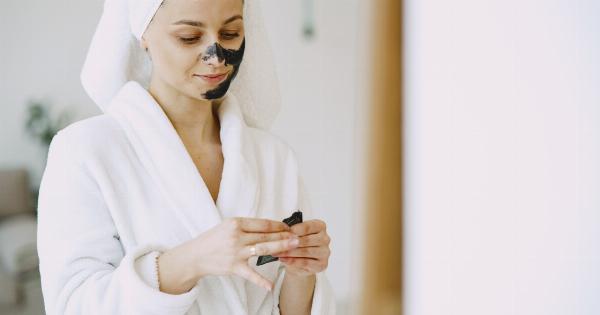Acne is a prevalent skin condition that affects millions of people worldwide. It can be a source of embarrassment and distress, leading many individuals to seek ways to conceal their acne.
In this comprehensive guide, we will delve into the causes of concealed acne, explore various treatment options, and provide tips for effectively covering up breakouts.
What is Concealed Acne?
Concealed acne refers to acne that is hidden or covered up using cosmetics, clothing, or other methods. While acne can appear on various parts of the body, it is most commonly found on the face, neck, and back.
Concealing acne can provide temporary relief from the visibility of breakouts, but it is important to address the underlying causes to achieve long-term improvement.
Causes of Concealed Acne
Concealed acne can be triggered by a variety of factors, including hormonal imbalances, excessive oil production, bacteria buildup, improper skincare routines, and certain medications.
These factors can lead to clogged pores, inflammation, and the formation of acne lesions. It is crucial to identify the root cause of acne in order to effectively treat it and prevent future breakouts.
Treatment Options for Concealed Acne
1. Skincare Routine:.
Establishing a consistent skincare routine is essential for managing concealed acne. Use a gentle cleanser to remove dirt, oil, and makeup.
Look for products containing salicylic acid or benzoyl peroxide, as these can help unclog pores and reduce inflammation. Follow with a non-comedogenic moisturizer to keep the skin hydrated without clogging pores.
2. Topical Treatments:.
Over-the-counter topical treatments, such as creams, gels, and spot treatments, can be effective in reducing acne.
Look for products containing ingredients like retinoids, tea tree oil, or sulfur, as these can help to unclog pores, reduce inflammation, and kill bacteria.
3. Prescription Medications:.
In severe cases, a dermatologist may prescribe oral medications or stronger topical treatments to control concealed acne. These medications may include antibiotics, hormonal therapies, or isotretinoin.
It is important to follow the dermatologist’s instructions carefully and be aware of any potential side effects.
4. Lifestyle Changes:.
Adopting a healthy lifestyle can greatly contribute to managing concealed acne. Avoid touching your face, as this can transfer bacteria and irritate the skin.
Maintain a balanced diet, rich in fruits, vegetables, and whole grains, while limiting sugary and fatty foods. Regular exercise and sufficient sleep can also promote healthy skin.
Covering Up Concealed Acne
While treating the underlying causes of acne is crucial, there may be times when you need to temporarily conceal breakouts. Here are some tips:.
1. Preparation:.
Start with a clean, moisturized face. Apply a primer to create a smooth canvas for makeup application and improve its longevity.
2. Color Correcting:.
Use a green-tinted color corrector to neutralize redness. Apply it directly to any inflamed areas before foundation.
3. Foundation:.
Choose a foundation that matches your skin tone and has a non-comedogenic formula. Apply it with a brush or sponge, focusing on acne-prone areas. Build up coverage gradually for a natural look.
4. Concealer:.
Use a creamy concealer that matches your skin tone to cover individual blemishes. Gently blend it with a brush or fingertip to ensure a seamless finish.
5. Setting Powder:.
Dust a translucent setting powder over your face to set the foundation and prevent excessive shine. Be careful not to overdo it, as too much powder can accentuate dryness and make your skin appear cakey.
6. Blush and Contour:.
Add a touch of blush and contour to add dimension and color back to the face. Choose powder formulas over creams to avoid clogging pores.
7. Eye and Lip Makeup:.
Draw attention away from your acne-prone areas by accentuating your eyes or lips. Experiment with different makeup looks to find what makes you feel most confident.
Preventing Concealed Acne
Prevention is key when it comes to concealed acne. Here are some prevention tips:.
1. Cleanse Regularly:.
Wash your face twice a day with a gentle cleanser to remove dirt, oil, and bacteria. Avoid harsh scrubs or cleansers that can irritate the skin and worsen breakouts.
2. Moisturize:.
Use a lightweight, oil-free moisturizer to keep your skin hydrated without clogging pores. Look for products labeled as non-comedogenic or oil-free.
3. Hands Off:.
Avoid touching your face throughout the day, as it can transfer bacteria and irritate the skin. Be mindful of leaning your face on your hands when sitting or resting.
4. Sun Protection:.
Wear sunscreen with an SPF of 30 or higher every day, even on cloudy days. Sun exposure can worsen acne and cause post-inflammatory hyperpigmentation.
5. Clean Makeup Tools:.
Regularly clean your makeup brushes, sponges, and other tools to prevent the buildup of bacteria. This will reduce the risk of transferring bacteria onto your skin and causing breakouts.
6. Limit Makeup Use:.
Try to give your skin occasional makeup-free days to allow it to breathe and recover. When using makeup, choose non-comedogenic products labeled as suitable for acne-prone skin.
Conclusion
Concealed acne can be a temporary solution for managing breakouts, but it is important to address the underlying causes for long-term improvement.
By following a consistent skincare routine, seeking appropriate treatments, and making necessary lifestyle changes, you can effectively manage and prevent concealed acne. Remember, always consult a dermatologist for personalized advice and guidance.































